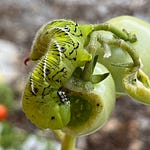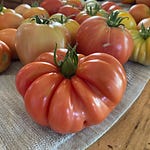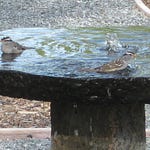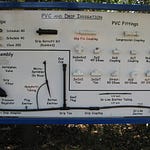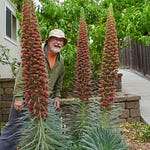Composting, Indoors and Out
Today’s newsletter podcast deals with options for indoor food scrap composting equipment, specifically kitchen composters (originally aired in Episode 196 of the Garden Basics with Farmer Fred podcast in May of 2022. In our conversation with America’s Favorite Retired College Horticulture Professor, Debbie Flower, she took a scenic bypass to talk about her outdoor garden kitchen scrap composter device, the Green Cone Composter. More information about that is below.
But before we get to that, let’s recap what you may have missed on this week’s two Garden Basics podcast, which includes another deep dive into the “kitchen scraps in the garden” debate:
Tuesday, May 21: Episode 336 - Q&A Kitchen Scraps in the Garden? When Should You Plant a Flowering Magnolia Tree, Spring or Fall?
Takeaways
• Burying kitchen scraps in the garden can attract scavengers like rats, gophers, voles, and ants, and may affect the quality of the soil microbiology.
• Composting kitchen scraps first or using alternative methods like African keyhole-style gardens or the Green Cone composter are recommended.
• The best time to plant a flowering tree like the Magnolia Genie is in the fall, but it can also be planted in the spring with extra care and regular watering.
• Keeping a tree in a container over the summer requires frequent watering and protection from heat damage.
• Using Smart Pots can help maintain cooler soil temperatures and reduce evaporation in container gardening.

Friday, May 24: Garden Basics Podcast, Episode 337 - How to Choose Nursery Plants. Tips for Starting a School Garden
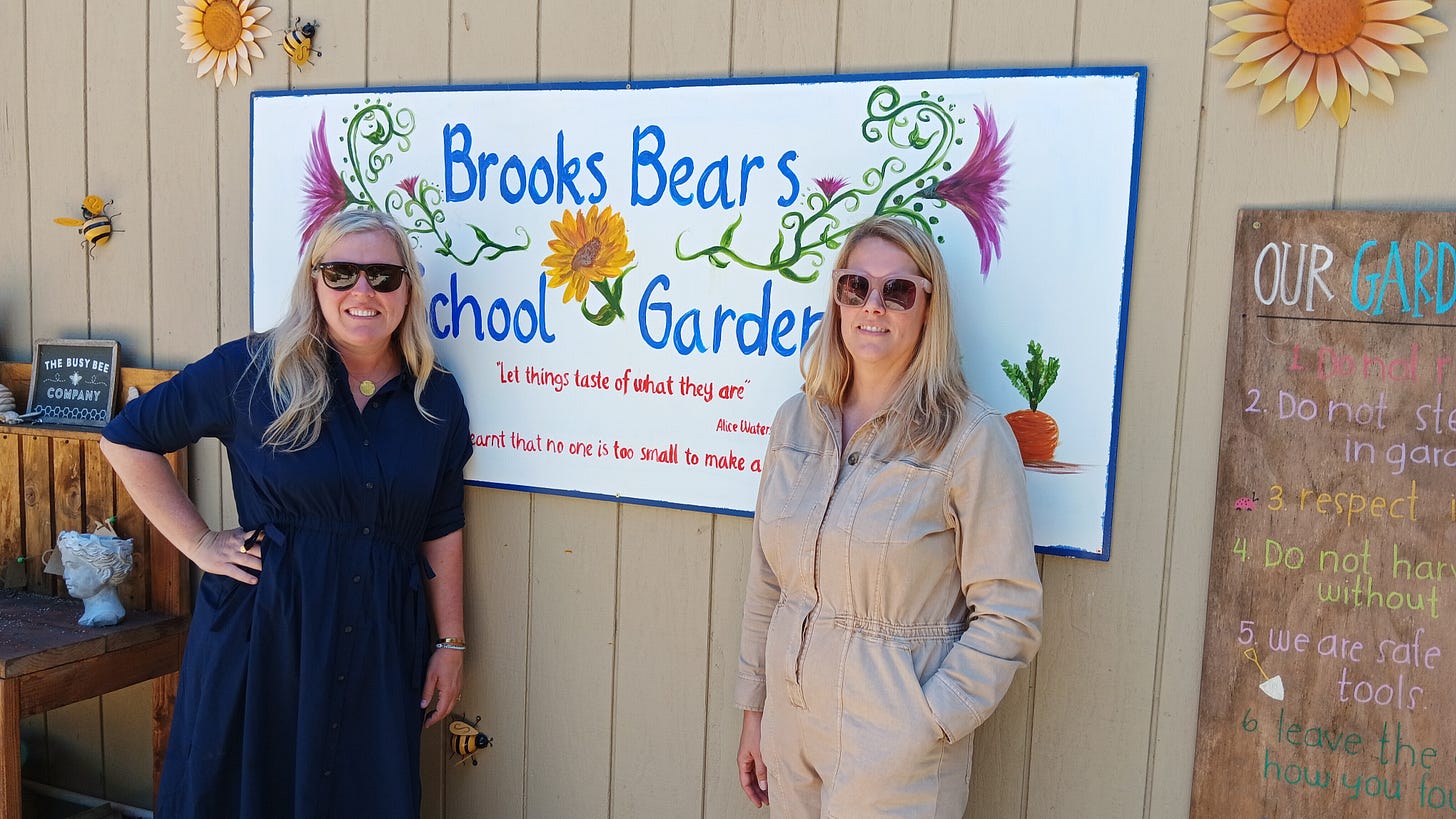
Takeaways
Choosing Nursery Plants:
• Read the signs and make sure the plant will fit in your garden and take the conditions you have in mind.
• Check the plant for health, including good color, no holes or spots on the leaves, and no stickiness or mushiness.
• Inspect the media the plant is growing in, looking for weeds, the height of the media, and the presence of roots.
• Consider direct seeding certain vegetables like cucumbers and squash, as transplanting them when they have too many leaves can hinder their growth.
• Pot up plants in larger containers if you're not immediately planting them in the ground, especially for tomatoes, peppers, and other summer vegetables.
Tips for Starting a School Garden:
• School gardens can be a valuable educational tool and a source of community involvement.
• Getting the school on board and finding funding can be challenges, but reaching out to the principal and parent groups can help.
• Students play an active role in maintaining the garden and learn valuable gardening skills.
• The garden provides opportunities for hands-on learning, including lessons on composting, integrated pest management, and plant care.
• The garden also serves as a gathering place for the community, hosting farmers markets and lunch pop-ups.
Burying Kitchen Scraps in the Garden: Is That a Good Idea?
Recently, we received a question wondering about the pros and cons of burying kitchen scraps to feed the garden soil.
From the garden e-mail bag, Alice confesses: “I am a lazy composter. What we do is bury our kitchen scraps in different holes, all throughout our raised beds, all winter long. And it ends up making truly beautiful soil over the years. And there's lots of earthworms and other microorganisms I can't even see. Anyway, I'm wondering if there would be any problems with that. We do have raccoons, skunks, and possums because we live in the country. But they don't visit the garden. Apparently, they have resources elsewhere. And except for them, I don't see that there's an issue because the soil looks very nice. But you never mention burying garbage in your columns or podcasts. So, I'm wondering if there's some problem that I'm not aware of.”
Alice, other possible scavengers of kitchen scraps buried in the garden might include rats, gophers, voles and ants. Especially ants, which could create tunnels throughout your raised bed which could siphon the irrigation water away from plant roots and out the bottom of the bed, or wherever their tunnels might lead. However, whatever you're doing seems to be working.
But beware, there are a lot of variables. You want to bury it deep, certainly deeper than 12 inches to keep the four-legged varmints, including the household dogs, away from it. You don’t want to bury meat scraps. Also, avoid any foods soaked in oils, salts or sugars, which can attract smaller pests and possibly effect the quality of your soil.
For even more opinions, and they are just that - opinions - the National Gardening Association has a thread at their website (garden.org) entitled, “Kitchen Waste Buried in Garden Soil?” Many people have weighed in on their experience doing that very thing, and it appears to be evenly divided as to whether they like it or not.
Some of the comments and opinions:
From Florida: “My mother in law (who lived to be 97 years old) had wonderful vegetable and flower gardens and she'd always take kitchen waste out to her garden, dig a hole and bury it. Just be sure to bury it deep enough that night time critters (raccoons, possums) don't dig it up.”
From Nevada: “Short answer: No. Decomposition is an aerobic process, it needs oxygen to happen - that's why we continually turn our composts piles. Well preserved fossils were formed in an anaerobic environment - without oxygen, instead of decomposing, they turned into rocks. You won't really have fossils in your garden, you will have a landfill. Although archeologists do get pretty excited when they find an old dump. If you choose to leave your kitchen waste on the surface of the soil, it will decompose but, the bacteria will be using nitrogen in the process. So, the soil will be low in nitrogen until the decomposing process is completely finished. When the bacteria finish the job and die, the nutrients will be put back into the soil. In the meantime, you will have a messy, rat filled garden.”
And, From Western Massachusetts, my favorite: “I do this. Well, I was doing it, but the dogs drove me insane so I have stopped for now.
I was using this method and won't know how it works until I plant that bed in May (it will be tomatoes next year):
-Dug a trench 12-18" deep and piled the soil to the right of it.
-started keeping a separate wastebasket for kleenex, paper towels ("browns"). It's actually kind of amazing how much garbage is composed of that stuff....toilet paper rolls and so on.
-go out and dump the kitchen compost bucket & coffee grounds in the trench, throw on some browns, cover with an inch or so of soil
-repeat until the whole mound was about ten inches off the surface of the bed, then dig another trench
This was great for me and also great for the dogs who were like, 'did someone bury a Kleenex somewhere???? IT IS WAITING FOR ME'
And I had to cover the three rows I'd done with chicken wire. If it weren't for those bozos though I would totally have kept it up. I think the freezing and thawing over the winter would have compressed that to a normal soil level and by the time I transplanted tomatoes into it in late May, it would be unrecognizable.
Unfortunately I was unable to complete my testing on this theory.”
Many of the other answers were variations of what is known as the African Keyhole Garden, a subject we explored in depth in a previous edition of this newsletter.
The African Keyhole Garden
There is also the African Keyhole Garden, which is another way to incorporate kitchen waste in the garden using a container – with plenty of small holes – to allow worms to go in and out of it, sort of like a real time, secure worm bin where the worms can spread their castings throughout the garden bed. The garden is shaped like a keyhole, to allow you to get to the middle of a six-foot bed to deposit the scraps in a container, which could be as simple as a trash can with a lid, with holes drilled in the sides that are buried in the garden. “The African keyhole garden was designed by CARE in Zimbabwe during the mid-1990’s to encourage people to grow their own food,” explains Napa County Master Gardener Penny Pawl. “The design relied on materials that were close at hand—such as bricks, stones, branches, hay, ashes, manure and soil—to create an easy-care garden for disabled people. The plan became so popular that many Africans began growing kitchen gardens. More than 20,000 of these have been built in Africa.”
An Alternative Way to Bury Kitchen Scraps in the Garden
Another person with experience of burying kitchen waste in the garden is our frequent contributor to the podcast, retired college horticulture professor Debbie Flower. She has a device that is buried in her garden that hold kitchen scraps and keeps the four-legged critters out: the Green Cone Solar Waste Digester/Compost Bin.
“It's tall enough - about three feet tall - that a raccoon, which was my initial fear, cannot get into it,” says Flower. “It has a lid with a hinge and a lock. I have to say I've broken every hinge and lock that has come on them. That's kind of the weak point of the thing, but I just put a rock on top. And only because the lid might blow away. Nothing has tried to get into it. I have lots of worms that go in and out of it. Everything in it just disappears because the worms come to it and take it away to the rest of the garden. I had my last one for 15 or more years.”
I believe the best place to break down those kitchen scraps for use in the garden is in a compost pile or a worm bin, where the worms will make some of the best soil amendments around, worm castings.

Thanks for reading Beyond Basics: The Garden Basics with Farmer Fred Newsletter! Subscribe for free to receive new posts and support my work.
Thank you for also listening to the Garden Basics with Farmer Fred podcast! It’s available wherever you get your podcasts. Please share it with your garden friends.
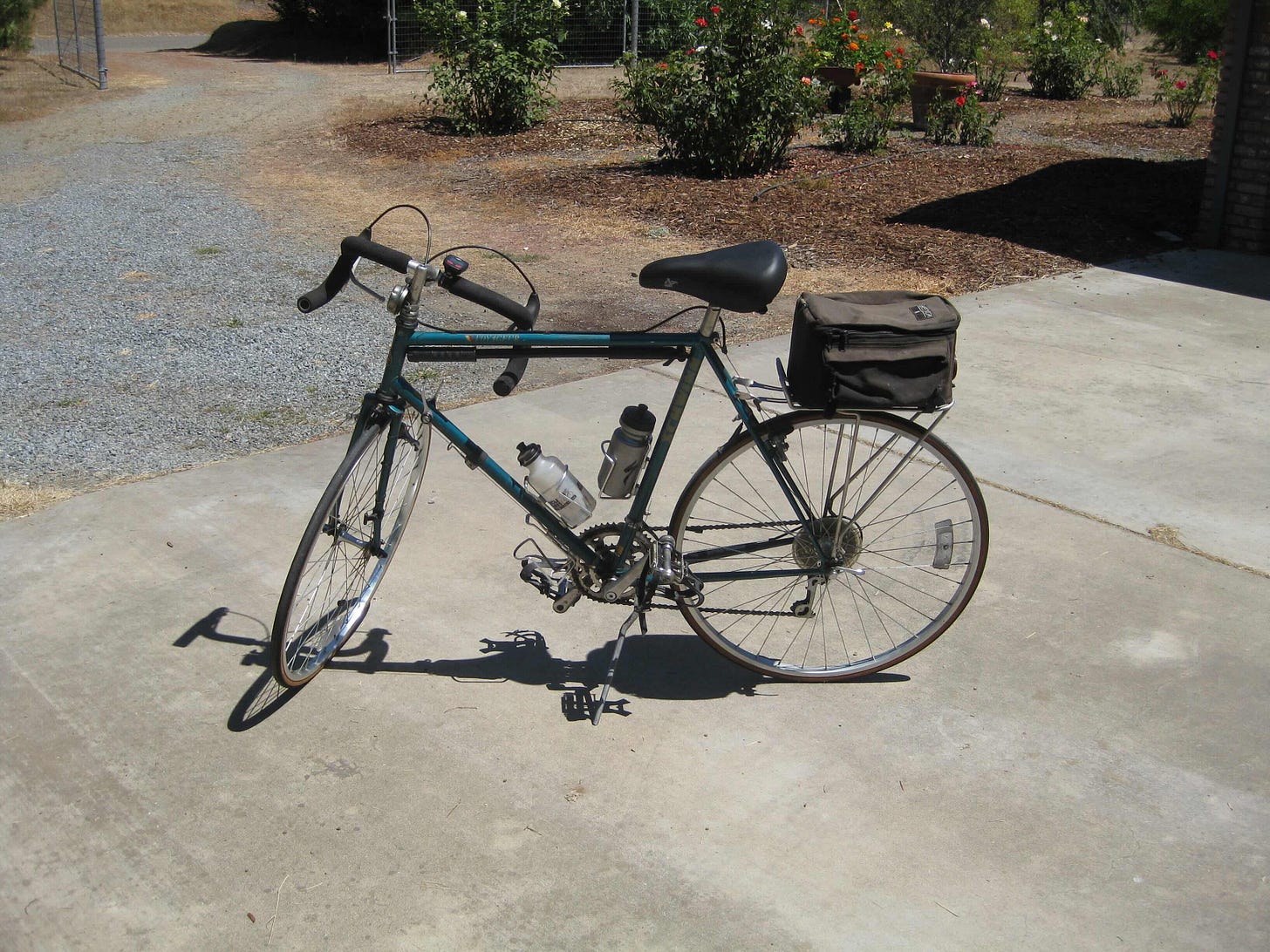
Fred Hoffman is also a University of California Cooperative Extension Master Gardener in Sacramento County. And he likes to ride his bike(s).








